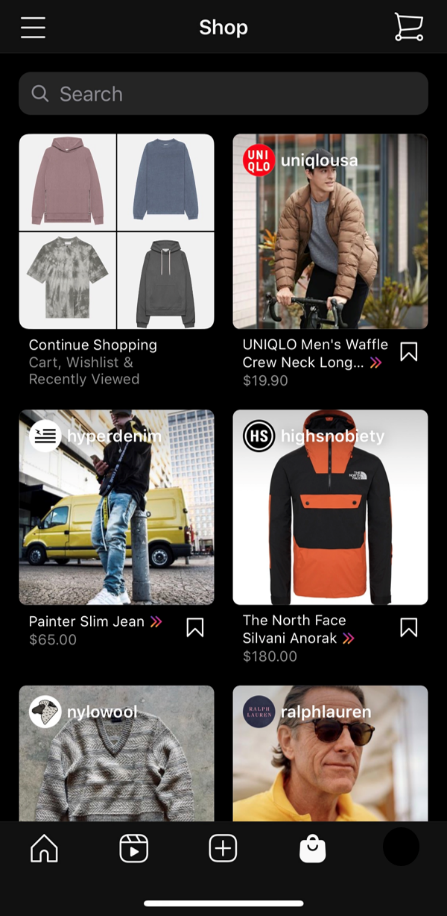Earlier this summer, Instagram started testing a new feature by adding in a shopping icon, replacing the legacy activity feed icon. I have yet to see this feature on my personal Instagram account until this morning. While Instagram has recently released its new “reels” feature, this new step to replace the activity feed with the shopping icon shouldn’t be overlooked and is a very important development. Here’s why:

Traditionally users weren’t able to purchase items through social media platforms. Social influencers could promote brands through their channels and direct users to “swipe up” or click a link in their bio to purchase. But this new shopping feature is allowing influencers to create content around products that can ultimately be purchased within the Instagram application. Why is this important? Social proof. It’s been proven that consumers want validation before and after making a purchase. By giving a channel for this social proof use case, Instagram allows customers to interact and purchase brands that their favorite influencers represent.
Not only that, Instagram will suggest other brands for you based upon the content you engage with and the people you follow. Here are some statistics to back up this social proof:
- 92% of consumers around the world say they trust earned media, such as recommendations from friends and family, above all other forms of advertising—an increase of 18% since 2007
- 70% of people will trust a recommendation from someone they don’t know
- 40% of people say they have purchased a product online after seeing it used by an Influencer
The statistics don’t lie. In fact, they point to the clear fact that social commerce is one of, if not the top, areas B2C organizations should look to focus on in 2021. The social proof customers desire has traditionally been served through reviews on product experience pages or third-party sites like Amazon. These reviews will still remain a key factor… for now. But Instagram’s entrance into the commerce arena hits on a broader ecommerce trend that has been going on for years.
Ecommerce has always been about delivering the desired user experience and tailoring site features and workflows to the exact needs of the customer, and more specifically, in a place that they already are: the internet. But let me ask you this: If you needed a new pair of sunglasses today, where would you start looking? You might google “top sunglass trends for 2020” and be presented with a list of articles and blogs detailing the latest trends in shades. While that experience is commonplace today, it’s going to drastically change in years to come.
Google has trained us to search for these types of questions through their fantastic search engine results, and that trained behavior is still present and active today. With Instagram building a shopping section of their application, our consumer behaviors will slowly start to shift, especially as younger generations develop more purchasing power.
Instead of starting on Google, we will turn to Instagram (and other social platforms, I predict) to find products that we want to buy, backed by social proof. In addition, Instagram collects and stores all of the items that users have recently viewed within this shopping icon – essentially building a unified marketplace for customers to find any and all products they have recently interacted with. It’s features like these that will shift our behaviors from Google to Instagram as the starting point for product research and discovery, simply because Instagram is providing the avenue for product discovery in the place where users are active.

If you’re a B2C brand looking for new ways to increase sales and revenue, I’d explore and experiment with this new Instagram feature. Even if you don’t use influencers to promote your products today, it’s still worth testing as this trend will continue to grow with popularity, especially if your target audience falls within the 18-24 demographic.
Consumers can easily go to Amazon and search for “cool looking sunglasses” and be presented with thousands of options and reviews for each. But as shopping habits shift and consumers learn that they simply can go to Instagram, click on the shopping icon, and see the sunglasses their favorite football player is wearing, the game will be forever changed.

